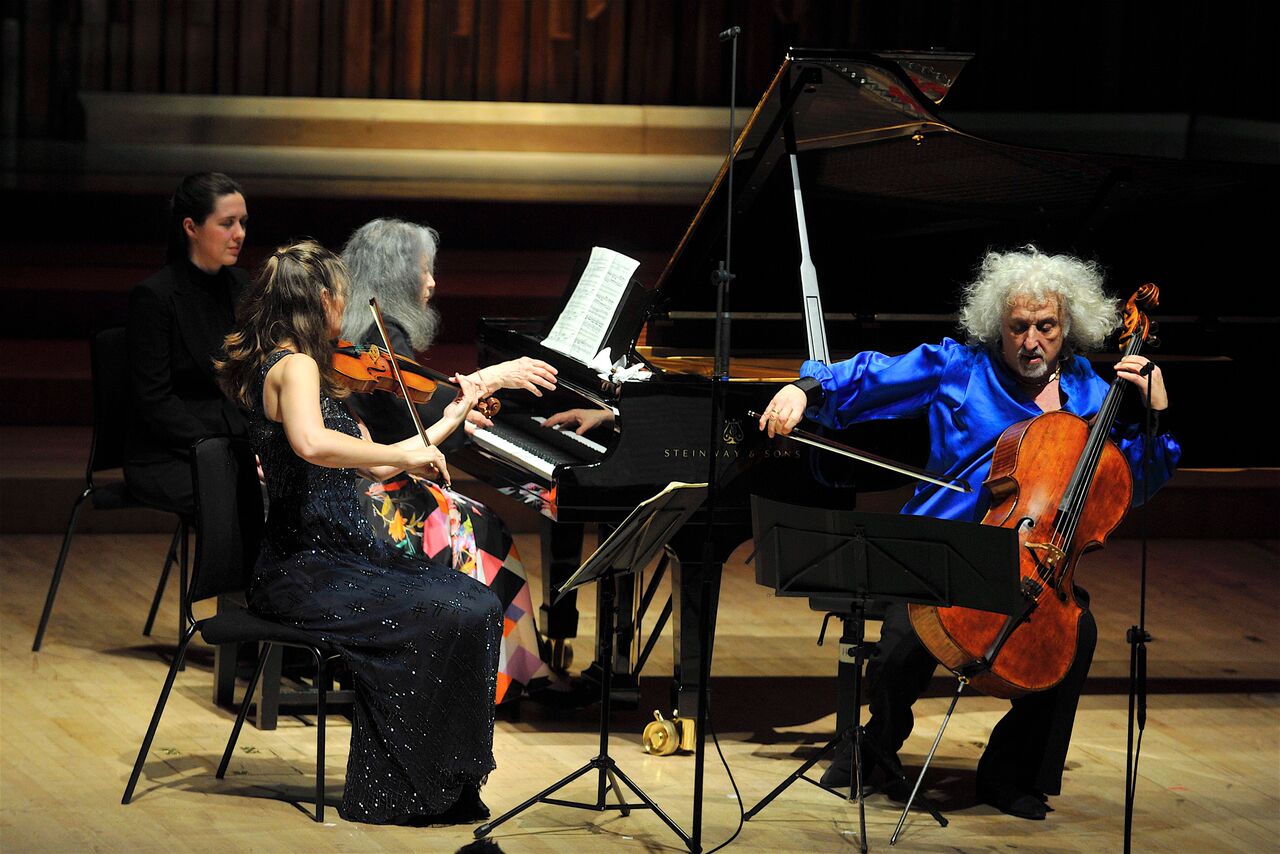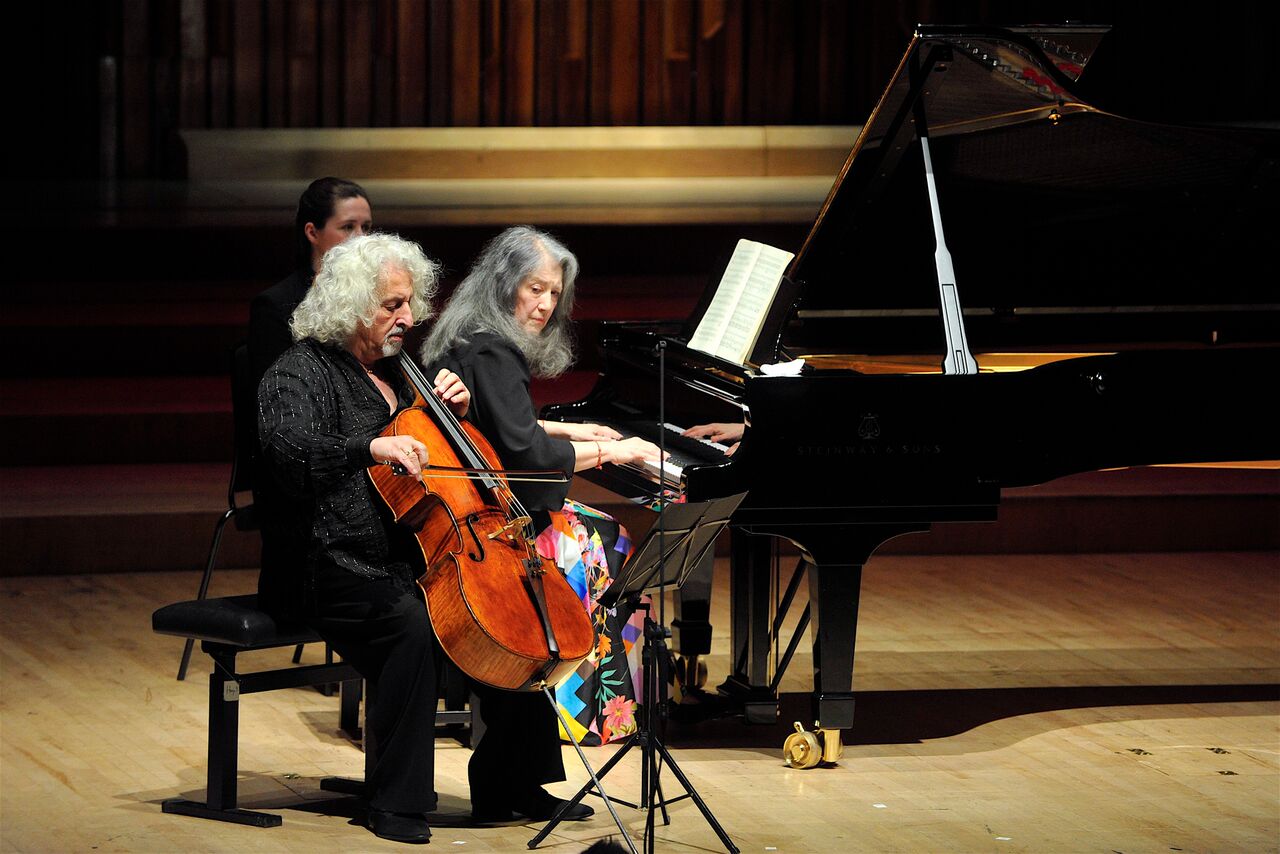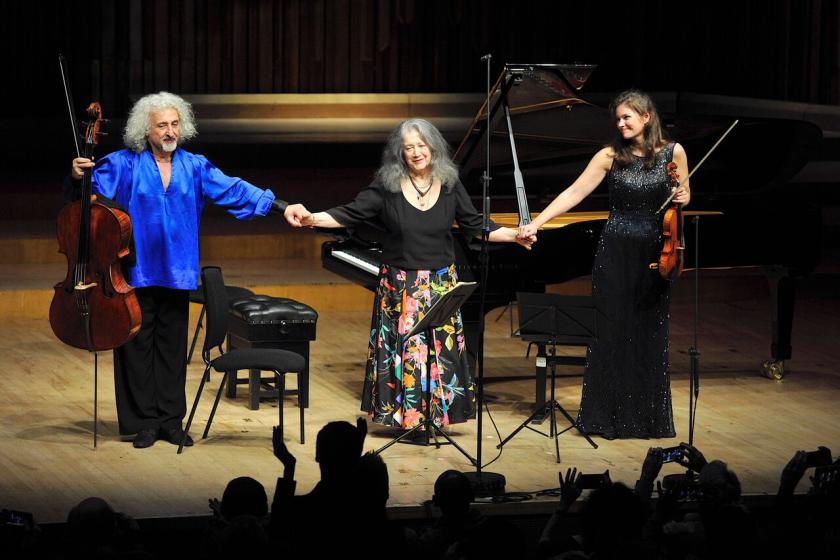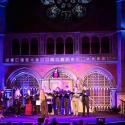They were billed as a Trio, but when the classical super-group of Janine Jansen, Mischa Maisky and Martha Argerich came together at the Barbican last night it was in a sequence of different combinations, each with their own musical identity. The centre of gravity, however, remained constant. Martha Argerich, the only performer present throughout, may have reinvented herself and her sound fifty times in the course of the evening, now asserting, now effacing, but it was she who rooted the whole, who provided the fixed compass point around which her colleagues roamed so freely.
The alchemy of music-making is a funny thing. Decades of friendship and collaboration connect Argerich and Maisky, and yet musically they are completely different beasts. Argerich’s flames burn white-cool and close, while Maisky’s lick and sprawl with profligate, generous heat, sending sparks tumbling each time he draws his bow. It’s a contrast that flourished in Mendelssohn’s impetuous Trio No. 1 in D minor, and found common ground in Shostakovich’s Piano Trio No. 2 in E minor, but which contested the territory of the Beethoven.  The Cello Sonata No. 2 in G minor is a work in the grip of an identity crisis, trying on everything from JC Bach to Mozart to proto-Lisztian excess for size. While Maisky (pictured below with Argerich), responsive to these mercurial moods, whittled down his broad tone right down to a soft classical point for the opening, drawing thicker and harder into the tempestuous Allegro, Argerich had the Romantic drama in her sights from the start, tugging the music forwards in time even a Maisky pulled it back.
The Cello Sonata No. 2 in G minor is a work in the grip of an identity crisis, trying on everything from JC Bach to Mozart to proto-Lisztian excess for size. While Maisky (pictured below with Argerich), responsive to these mercurial moods, whittled down his broad tone right down to a soft classical point for the opening, drawing thicker and harder into the tempestuous Allegro, Argerich had the Romantic drama in her sights from the start, tugging the music forwards in time even a Maisky pulled it back.
The Jansen-Argerich partnership, by contrast, feels like a natural, instinctive kinship. In addition to their astonishing technical facility both share a musical courage of conviction – a willingness to do less, to let the audience hear straight through to the composer without mediation. The apparently unworked directness that results is as exhilarating as it is disarming, and Schumann's A minor sonata unfolded in a single, unbroken thought, led by Jansen’s sweet-strong violin.
It’s hard to imagine two more contrasting trios than the exuberant affirmation and celebration of the Mendelssohn and the trauma and rage of the Shostakovich. The Mendelssohn – a thrilling closer – saw Argerich step forward to set the pace, laying a frenetic musical paper trail in the Scherzo for violin and cello to follow – its bustling, characterful quality a world away from the opaque clarity and control of the passagework in both the outer movements, semiquavers scattered like diamonds, catching the eye beneath the heavy velvet of Maisky and Jansen.  But it was the Shostakovich that haunts. The icy cello harmonics and resigned, canonic tread of the opening can set it up for numbed suppression – emotion felt, but buried fathoms deep. Here, in the defiant urgency of the dances, the manipulation of intonation as a colour, the insistence on individual voice and identity from Jansen and Maisky, we had something else.
But it was the Shostakovich that haunts. The icy cello harmonics and resigned, canonic tread of the opening can set it up for numbed suppression – emotion felt, but buried fathoms deep. Here, in the defiant urgency of the dances, the manipulation of intonation as a colour, the insistence on individual voice and identity from Jansen and Maisky, we had something else.
Music here might lose its fight for life – sound subsiding into not just harmonics but pizzicato shards and finally col legno husk – but there’s a wonderful tension that comes from a performance that won’t accept that, that refuses to go gently. It’s hope, not horror, that gets you in the end, as Argerich, Maisky and Jansen, dogged in their search of resolution, redemption, understood so completely.













Add comment